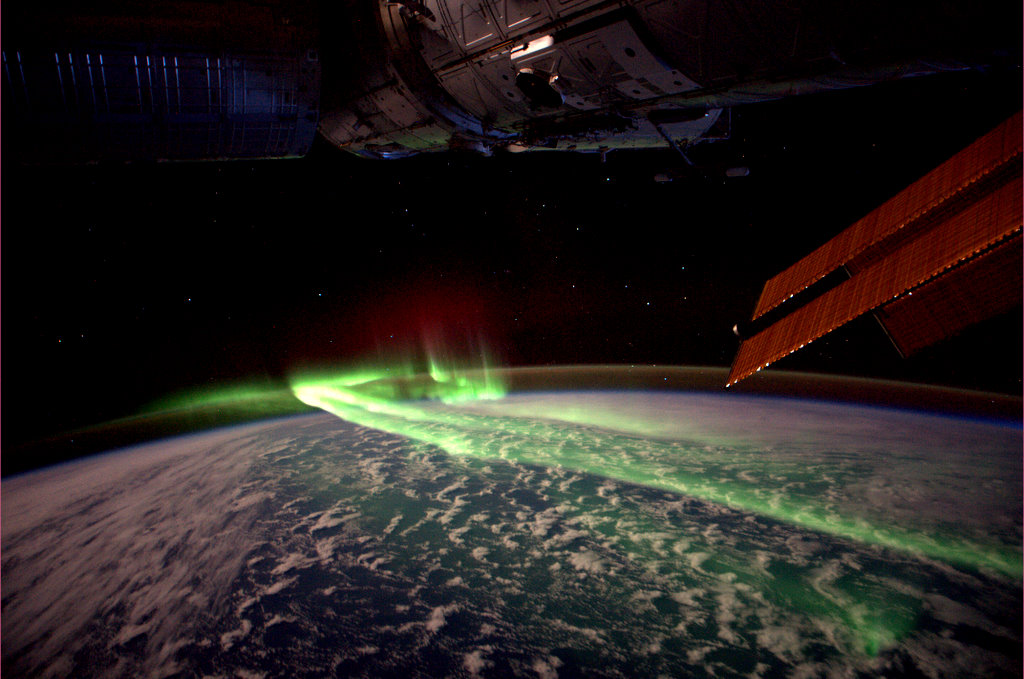It looks like you're using an Ad Blocker.
Please white-list or disable AboveTopSecret.com in your ad-blocking tool.
Thank you.
Some features of ATS will be disabled while you continue to use an ad-blocker.
2
share:
Hi Guys.
Just wanted to share this amazing picture a Dutch astronaut in the
International Space Station has captured of the aurora over New Zealand,
From last week's solar flare that hit Earth.

Simply breath taking!!
Would love to be an astronaut in space at a time like this!.
Linky :www.stuff.co.nz...
As we are heading into the Solar Maximum this year, Im sure we will have many more
opportunities to witness more of these AMAZING lights.
Visit link for full short article
www.stuff.co.nz...
If someone could embed the picture for me, i would be very greatful!. Thanks in advance
Just wanted to share this amazing picture a Dutch astronaut in the
International Space Station has captured of the aurora over New Zealand,
From last week's solar flare that hit Earth.

Simply breath taking!!
Would love to be an astronaut in space at a time like this!.
Linky :www.stuff.co.nz...
As we are heading into the Solar Maximum this year, Im sure we will have many more
opportunities to witness more of these AMAZING lights.
Visit link for full short article
www.stuff.co.nz...
If someone could embed the picture for me, i would be very greatful!. Thanks in advance
edit on 13-3-2012 by karmajayne because:
hopefully it works this time
edit on 13-3-2012 by karmajayne because: (no reason given)
reply to post by karmajayne
Yea its pretty, but please dont ask twice or we'll have Fire Lits up the Heavens...
Yea its pretty, but please dont ask twice or we'll have Fire Lits up the Heavens...
Go to Tools > ATS Uploads > Select Image File > Upload > Click picture > Use the link beneath it >

Another beautiful picture. This astronauts twitter account is @astro_andre, he regularly posts his photos there. Recommended!

Another beautiful picture. This astronauts twitter account is @astro_andre, he regularly posts his photos there. Recommended!
I don't get it... the pictures taken from the Moon, space has no stars, the same when in the stratosphere, yet here I see stars
reply to post by Imtor
Depends on exposure time I think, that picture looks like a long exposure. But then again im not an expert
Depends on exposure time I think, that picture looks like a long exposure. But then again im not an expert
Originally posted by Imtor
I don't get it... the pictures taken from the Moon, space has no stars, the same when in the stratosphere, yet here I see stars
Simple, moon is very bright, so in order to use an exposure to show the moon, stuff that isn't as bright shows up as black. Cameras have only a certain range of light they can capture in a single photograph.
To help illustrate.
Say the camera's range is
0-----5----10
And you have the moon which is a brightness of 20, then the range of light the camera can record in that photo is
15----20----25
So if the brightness of the stars in the background are say a 9, it won't show up in the photo because it's out of range.
In the photo above that has stars and the earth, the brightness of the earth is say maybe about a 13. So if the photo is exposed for the earth, anything in the below range will show up in the picture:
8----13----18
So the stars will show up, because they are a brightness level of 9.
Now this is entirely made up to illustrate how it works, these numbers don't mean anything in reality.
But you can go and test this out. Take your digital camera, point it at a super bright light in the room like the light bulb in a lamp, and put something next to it. Because the light is so bright (i.e moon) the object you place next to it (assuming it's not also bright) won't even show up in the photo, it will be black, just like the blackness around the bright light in your picture. You can do the reverse with something very dark and putting something bright next to it, if your camera has exposure lock or you can set the exposure manually. The dark thing you expose for will show up, but the bright thing next to it will be totally washed out with no detail.
Here's a better example. Take your digital camera outside on a bright sunny day, and take a photo of the landscape. The sky will show up in the photo as white with no detail in it, even when you know the sky is blue with clouds. But the ground looks just fine. Well, it's because you are exposing for the ground and the sky is so much brighter, it's out of the camera's range it can capture in a single picture. Now, point the camera up in the sky and take a photo. Sky will be perfectly blue and you will see clouds in the photo. This is because everything is in range, you don't have something that is so much brighter than everything else.
Same applies to no stars in the moon photos! The moon is a big giant reflector with a clear path to the sun.
edit on 13-3-2012 by WP4YT because: (no reason given)
